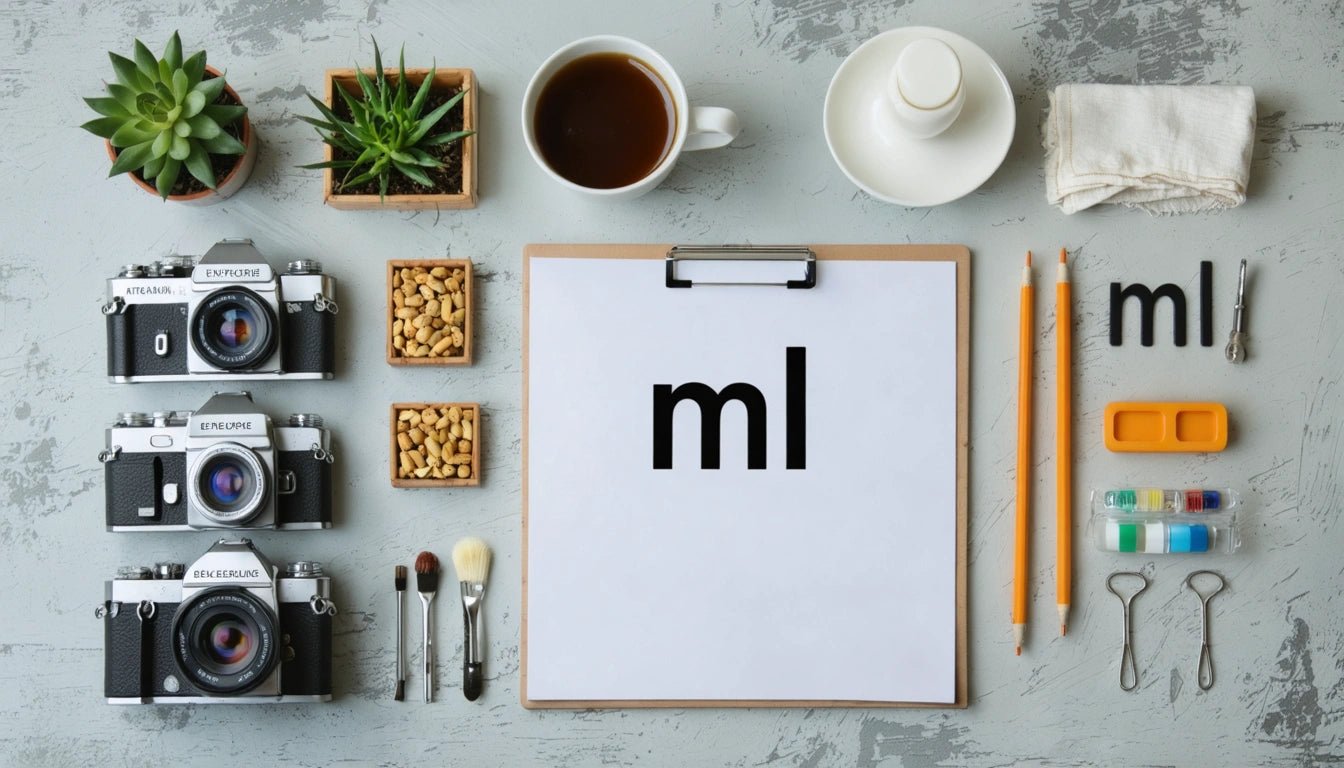Table of Contents
- mL Abbreviation Basics: Understanding the Correct Format
- mL vs ml: Typography and Style Guide Differences
- Measurement Contexts Where mL Notation Matters
- Industry Standards and Regulatory Requirements
- Practical Applications in Product Labeling
- Common Conversion Needs for Milliliter Measurements
- Future Standardization: Moving Toward Universal Measurement Notation
Understanding the Difference Between mL and mL: Are They the Same?
When working with volume measurements in scientific, medical, or commercial contexts, you might wonder about the difference between ml and mL. Though they refer to the same unit of measurement (milliliters), the way we write this abbreviation can vary across different style guides, industries, and regions. This article clarifies the proper usage, explains why consistency matters, and addresses common questions about milliliter notation.
mL Abbreviation Basics: Understanding the Correct Format
Milliliter is a metric unit of volume equal to one-thousandth of a liter. According to the International System of Units (SI), the technically correct abbreviation is "mL" with a lowercase "m" (for milli) and an uppercase "L" (for liter). This format helps distinguish the letter "l" from the number "1" in printed materials.
As explained in this guide on milliliter definitions, the uppercase "L" is recommended by scientific bodies to avoid confusion. However, "ml" (all lowercase) remains common in many everyday contexts and older publications.
mL vs ml: Typography and Style Guide Differences
The variation between "mL" and "ml" often comes down to which style guide an organization follows:
- Scientific and Medical Publications: Typically use "mL" (SI standard)
- General Publishing: Often uses "ml" (all lowercase)
- European Standards: May use "ml" more frequently
- US FDA and Pharmaceutical: Generally prefer "mL"
Despite these variations, both refer to exactly the same volume measurement. The difference is purely typographical and does not affect the actual measurement value.
Measurement Contexts Where mL Notation Matters
The notation becomes particularly important in specific contexts:
Medical and Pharmaceutical Applications
In medical settings, precise notation can be crucial for patient safety. Dosing instructions typically use "mL" to ensure clarity, as explained in this resource on mL definitions across contexts.
Consumer Product Labeling
Product labels may use either format depending on regional standards and manufacturer preference. For instance, our premium pre-rolled cones packaging follows strict measurement standards to ensure consumers receive consistent product volumes, whether labeled in mL or ml.
Highlight: While mL (with uppercase L) is the SI standard abbreviation for milliliters, ml (all lowercase) is still widely used and understood. Both refer to the same volume measurement of one-thousandth of a liter.
Industry Standards and Regulatory Requirements
Different industries have established their own conventions:
Food and Beverage Industry
Labels often use "ml" in many countries, particularly in Europe. In the US, you might see both formats, though "mL" is becoming more standard.
Cannabis and Hemp Products
For cannabis products, consistency in measurement notation is particularly important for regulatory compliance. As this guide on volume measurements explains, precise labeling of concentrates and tinctures requires clear volume indicators.
Practical Applications in Product Labeling
When creating product labels, manufacturers must consider:
- Regional regulatory requirements
- Target audience familiarity
- Industry conventions
- Design clarity and legibility
For example, a product might list "500 mL" or "500 ml" depending on these factors, but the actual volume remains identical. The key is consistency within a single product line or document.
Common Conversion Needs for Milliliter Measurements
Understanding milliliter measurements often requires conversion knowledge:
Converting Between Volume Units
Common conversions include:
- 1 mL = 0.033814 US fluid ounces
- 1 US fluid ounce = 29.5735 mL
- 750 mL = 25.36 US fluid ounces (standard wine bottle)
For detailed conversion guidance, this comprehensive guide on converting fluid ounces to milliliters provides valuable reference tables.
Practical Measurement Examples
To put milliliter measurements in perspective:
- A standard teaspoon contains approximately 5 mL
- A standard medicine cup holds 30 mL
- A can of soda typically contains 355 mL
- A standard wine bottle holds 750 mL
These references help contextualize volume measurements regardless of whether they're written as "mL" or "ml".
Future Standardization: Moving Toward Universal Measurement Notation
The trend in scientific and technical fields is moving toward standardized notation following SI guidelines, meaning "mL" is likely to become increasingly dominant. However, regional variations will persist, particularly in everyday consumer contexts.
What matters most is clarity and consistency within a specific context. Whether using ml or mL, ensuring that measurements are precise and clearly communicated remains the priority across all industries and applications.
For professionals working with precise measurements, following the appropriate style guide for your industry is recommended. When in doubt, the SI standard (mL) provides the clearest distinction between the letter "l" and the number "1", which can be crucial in technical documentation.
The bottom line: ml and mL represent exactly the same unit of volume measurement. The difference lies solely in typography and style conventions, not in the measurement itself.



















